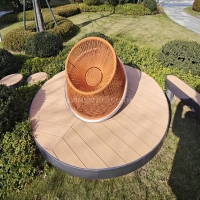Welcome to the website for landscape facilities products and knowledge.
How does the bin’s design ensure it can be easily customized for different cultural or regional preferences?
The adaptability of modern bin designs to cultural and regional preferences is a testament to thoughtful engineering and user-centric innovation. By incorporating modular components, manufacturers create bins that can be easily tailored to meet local needs. For instance, color-coding systems vary globally—red may signify general waste in one region but hazardous materials in another. Modular bins allow panels or lids to be swapped to align with these visual cues.
Material choices also reflect regional priorities. In eco-conscious markets, bins feature recycled plastics or biodegradable composites, while durability-focused areas opt for reinforced metals. Shape and size adjustments accommodate space constraints, such as slim designs for urban apartments or larger capacities for communal use.
Cultural symbolism is integrated through customizable graphics or embossing, ensuring bins resonate with local aesthetics. Additionally, smart bins with multilingual interfaces or icon-based labeling bridge language barriers. This flexibility not only improves waste management efficiency but also fosters user engagement by respecting cultural identities.
Ultimately, the bin’s design evolution prioritizes universal functionality while celebrating regional diversity—a key step toward sustainable, inclusive waste solutions worldwide.
Related search:

Recommendation
Swivel chair-Specialty steel structure woven rattan leisure chair with rotatable design